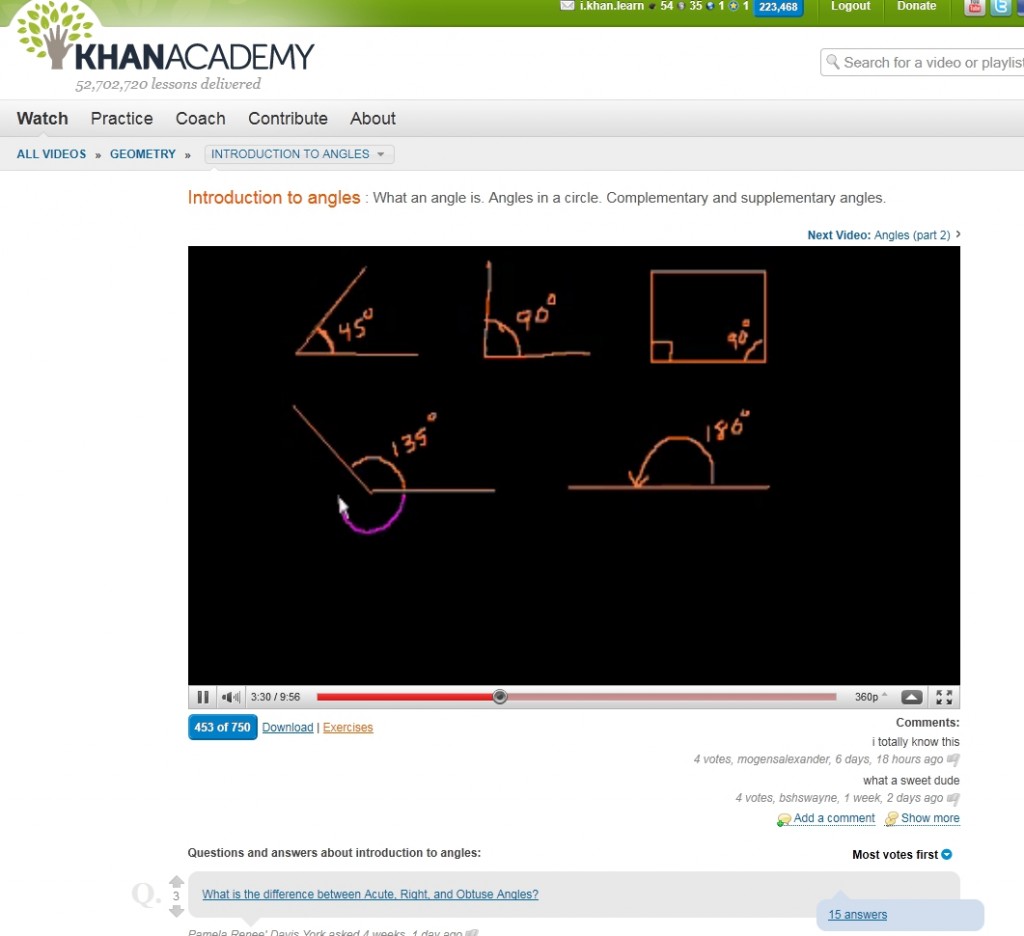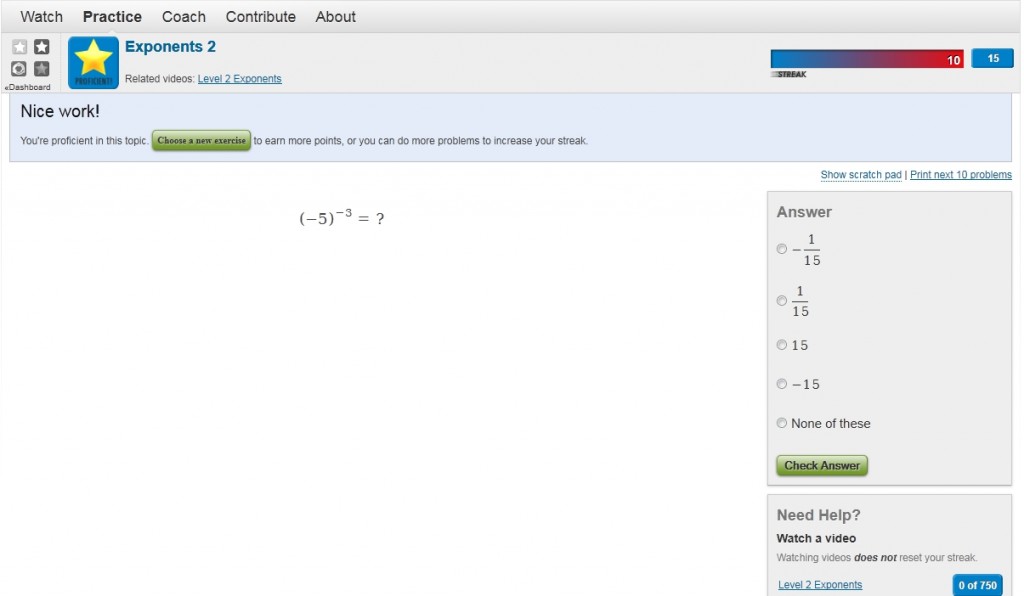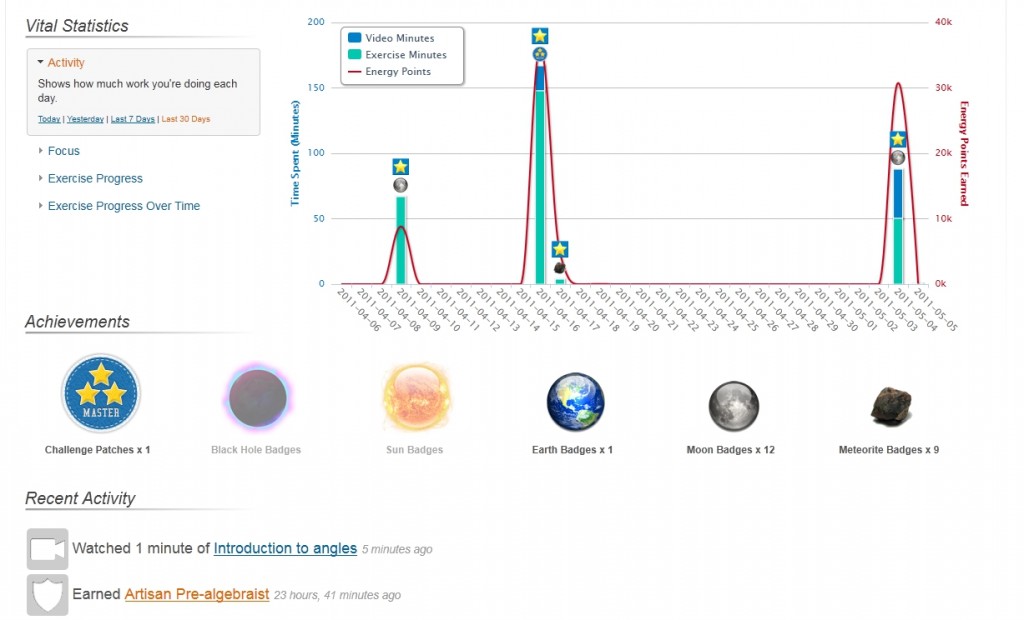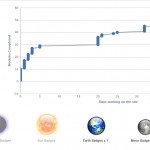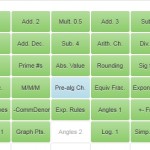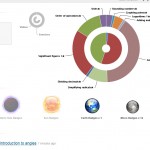I’ve personally been using the Khan Academy for several years. Salman Khan, the founder behind this amazing site used to work in the financial industry, making big bucks. He’s an MIT graduate who was trying to help out his younger cousins by tutoring them. You can hear the complete story in the video below, where he was invited to speak at one of the Ted talks. I really recommend you take the time to watch the video, Bill Gates even stops by to ask Sal a couple of questions.
[A quick side note on the The “TED talks”. They do a great job inviting leaders in their subject matter to speak in what feels like a more personal fashion. The subjects range greatly from the social to the scientific and everything in between. The stories and insights shared are truly worth taking the time to listen. You’ll be a richer person for it.]
That being said what the hell is the Khan Academy?
If you already know of them most of what follows will likely be old news. As previously mentioned Sal as he likes to go by was trying to help his younger cousins by tutoring them. After a few of these tutoring sessions he decided to create a video for them explaining various math concepts.
As he accumulated these videos he decided to upload them onto YouTube and share them with the world. The videos consist of a black “chalkboard” where Sal using different colors explains different concepts and works various problems and examples. You can see a typical example of the screen below:
You never actually see Sal. Slowly people from all over the world began watching his math videos and providing feedback in the comments section of YouTube. As Sal now famously puts it; his cousins had given a compliment even if it was a slightly underhanded compliment by saying his videos were better than he was in person or in real life to speak.
It’s gone from a few videos to a complete library with now over 2200 videos. The list of subjects keeps growing, as do the videos. In each lesson there’s Sal familiar voice, excitedly talking about the subject at hand, making self deprecating jokes, adding zeros (‘0’) in front of his decimals points in order to please his doctor wife and finally laughing at himself when he makes a mistake. My personal favorite example of this was when he made an error during the “Basic Trigonometry II” lesson; he explained “I sometimes malfunction”. Priceless.
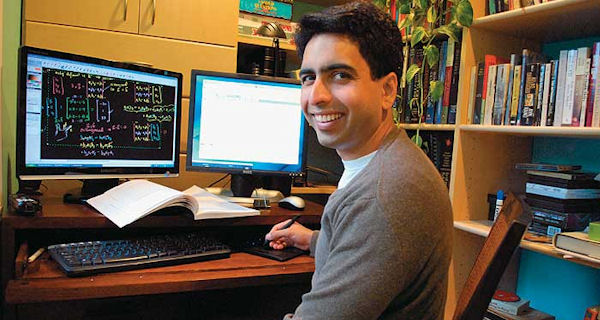 Sal “I sometimes function” Khan
Sal “I sometimes function” Khan
I’ve been using his math and physics videos on and off for a few years. Now consider this: The videos are only one aspect of what this site offers. After watching the video you can test your knowledge by attempting to answer questions on the subject you just watched.
If you answer 10 questions correctly in a row, you “pass” so to speak and the site then recommends you move onto the next subject matter. Get a question wrong and your streak resets. Get a few wrong in a row and the “quiz” will suggest politely that perhaps you should go re-watch the video lesson on the subject.
See the “Need Help” section on the bottom right hand side of the picture above? You can stop answering questions if you’re unsure and go watch the video on this particular section. It won’t affect your streak. It’s not shown but on that same page there’s a button where you can ask for a “hint”. Clicking on the button will reset your streak but it also usually provides you with the first step required to solve it. There are usually two or three hints included for each section. Once you’ve gotten 10 in a row right you can choose to continue answering questions on the exercise as long as you want. It also gives you ‘points’ for each correct question.
The points don’t have a purpose other than they become a type of badge that you wear proudly. They also provide little achievements. For instance if you watch X amount of hours of video it’ll give you a “badge” that says something like “Good Listener”. Some of the accomplishments have funny names, and it makes getting them a nice surprise.
On the picture above you can see some of the badges my most recent account has earned. It also shows me how many hours of videos I’ve watched, how many exercises I’ve completed and how many ‘points’ I’ve acquired. The visual aspect of this is very appealing and slightly addictive. You want to see yourself progressing. You feel bad when you haven’t logged in and at least done a little work every few days. You’re happy when one of the sessions goes well and you gather points that have no value other than knowing; you are learning.
It has a visual, statistical and educational value not only for the students but one that’s also indispensable for teachers. Let me explain; Teachers can sign up their students for the math subjects they are teaching.
Let’s use a very simple example, Jack and Jill are learning about addition and subtraction. The teacher assigns the addition and subtraction khan academy videos and exercises as their homework. They both proceed to watch the videos and attempt the exercises. They both get a few wrong but then little Jack hits a wall. He’s having problems when subtracting numbers above 10. Each time a question such as 10-4 came up, little jack got the question wrong. He never manages to get ten in row correct before it’s time to stop for the day.
We’ve just said that he wasn’t able to get ten in a row because of the problem he’s having while subtracting with numbers above 10. The teacher, when logging into the Khan Academy website would go check up on how her students did. The website will tell the teacher:
- How many questions Jack and Jill attempted.
- How many questions they got wrong, got right.
- Which videos were watched and for how long.
- The statistics provided will help the teacher identify that Jill is ready to move onto the next subject while Jack is having problems with subtractions over 10.
At this point the teacher could ask Jill to help Jack, showing him any tips she might have in regards to the troublesome subtractions. Jill and Jack don’t even need to know why they’ve been paired together. If the teacher preferred he or she (statistics say it’s going to be a she) can spend additional time on that particular subject with Jack while moving forward with a more advanced subject with Jill.
On your screen the “knowledge map” is a visual road map of the subject you’ll be learning about. Starting with basic addition you see how each branch is connected, changing in color as you complete each exercise. The teacher would see the same information as a plotted chart. The teacher could see that I struggled with the trigonometry section for instance. That I re-watched the video X amount of times and that I got the 30 questions wrong before I finally got 10 in a row correct. It’s all available to the teacher in a nice chart.
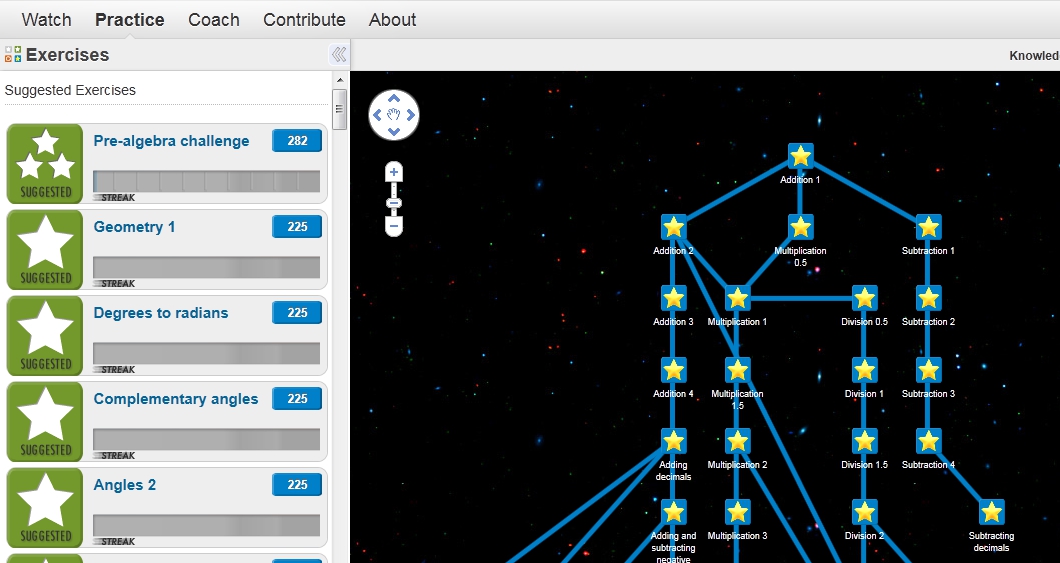 The blue squares are subjects that I ‘completed’
The blue squares are subjects that I ‘completed’
All these statistics, such as the amount of problems correctly answered, which video was watched, the amount of times it was watched, where a particular student is struggling or which subject matter a gifted student is now tackling is at the disposal of the teacher. It really breaks down all this information in an easy to visualize way:
Another great option is that you can locate “coaches” that are somewhat like tutors. I haven’t used this feature yet but I suspect it won’t be long before volunteers are giving “classes” on a particular subject if this isn’t already actively happening. Helping each other to learn, with no exchange of money being involved.
In the beginning Sal didn’t have funding for his project. He would sneak off during his lunch hours at work, or during his breaks to lock himself in a quiet room and film his videos. In a way he’s become a personal tutor for millions of people. His legacy to the human race and eduction in general is in my opinion already firmly in place. It’s been good to follow him through the years and see what was once a little known site grow into a fully funded, non for profit organization. Sal now has a great team on board and the progress they’re making with the site has been fun to watch.
Sal also quickly mentions in his TED talk about the individuals with various learning disabilities. These videos allow them to work at their own pace. He also speaks of the children in the third world who for several reasons might not have access to a school or teacher. With the 100$ laptops and the one laptop per child project the only other thing needed for an education is an internet connection. Developing countries often “leap frog” technologies to gain these accesses. For instance a country might not be able to afford to lay fiber optic or copper cables to install the internet, but chances are it can probably afford to setup a few wireless routers to give the general village access to cellphones and the internet. You get the picture.
All of this was done for free. Sal never wanted to “turn a profit” or protect his “copyrights”. He was more interested in genuinely helping others, something we could all do a little more. I’ve said it before and I’ll say it again:
Thanks Sal, keep on malfunctioning.
mtl_dokkaebi

